A tractor-trailer hauling an over-height load on northbound Interstate 49 in Lafayette, La., last January 3rd, discovered that the 15-ft, 6-in. vertical clearance at the I-10 eastbound overpass was not quite enough. The load, reported to be an excavator, tore into the bottom of the nearly 60-year-old structure, leaving three damaged girders, dangling rebar and chunks of shattered concrete in its wake.
From the moment the Louisiana Dept. of Transportation and Development (DOTD) shut down the interchange pending a full damage assessment, speed was of the essence to restore I-10 to full capacity. With an estimated 90,000 vehicles passing through the I-10/I-49 junction each day, says Mark Arceneaux, DOTD area engineer, “this is a major interchange in the Acadiana region.”
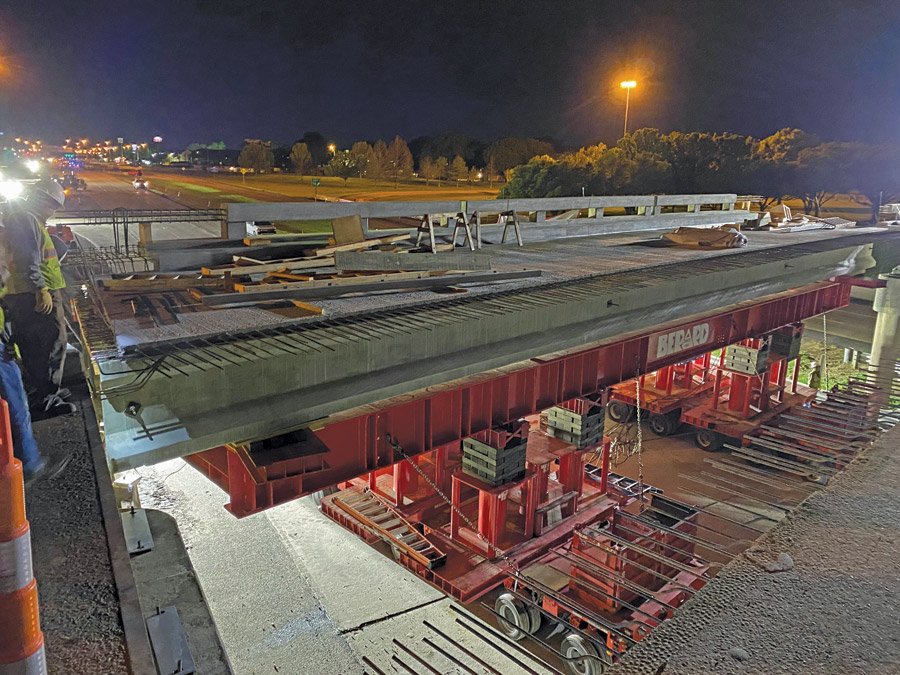
Crews used 12-axle self-propelled modular transporters to remove the damaged overpass section and move in the new one.
Photo courtesy Louisiana Dept. of Transportation and Development
The morning after the incident, DOTD used a direct emergency procurement process to select consulting engineer Huval and Associates and contractor CEC Inc. to perform a detailed inspection of the overpass and determine how—and even if—the damage could be repaired.
Along with availability and experience with infrastructure emergencies, both firms, which share common ownership, are based just two miles from the interchange.
“Within an hour of getting the contract, we were on site performing a detailed assessment and looking at ways to get at least some lanes safely reopened to traffic,” says David Huval Jr., CEC president
“Within an hour of getting the contract, we were on site performing a detailed assessment and looking at ways to get at least some lanes safely reopened.”
—David Huval Jr., President, CEC
The team found that two of the structure’s eight 82.5-ft-long, 45-in.-tall AASHTO Type III prestressed concrete beams had sustained severe damage and would require replacement. In addition, says Matt Hebert, Huval Associates’ engineer-of-record for the project, “the next girder in line was carrying a significant amount of dead load as a result of the damage to the other girders and would eventually need to be replaced as well.”
A bridge rating analysis with the damaged girders deemed the structure sufficiently stable to reopen the overpass to one lane of I-10 eastbound—an interim solution that would soon overwhelm the highway with traffic back-ups of at least seven miles. The only way to achieve DOTD’s goal of restoring both lanes of I-10 on the overpass, the analysis concluded, would be by removing the two outside damaged girders, deck and barrier section.
“This would remove a tremendous amount of dead load off that third damaged girder and provide a rating that would carry two travel lanes,” Hebert explains.
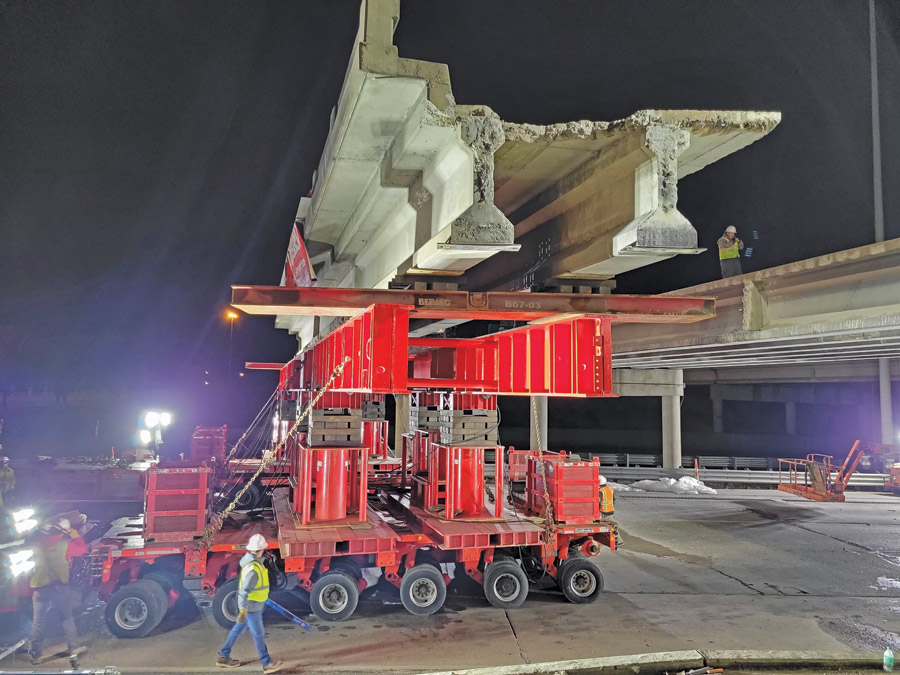
After being removed, the bridge segment was rolled 600 ft to a temporary laydown area constructed with 2,000 tons of stone.
Photo courtesy Louisiana Dept. of Transportation and Development
An Uplifting Solution
In evaluating repair alternatives, the project team soon began focusing on a two-part approach that would rely on self-propelled modular transporters (SPMT) both to remove the damaged overpass section and install a replacement.
“With this approach, we would need just nighttime and weekend closures of the interstates for the removal and installation operations to minimize disruptions to I-49 and open that second lane of I-10 more quickly,” explains CEC project manager Chris Giglio.
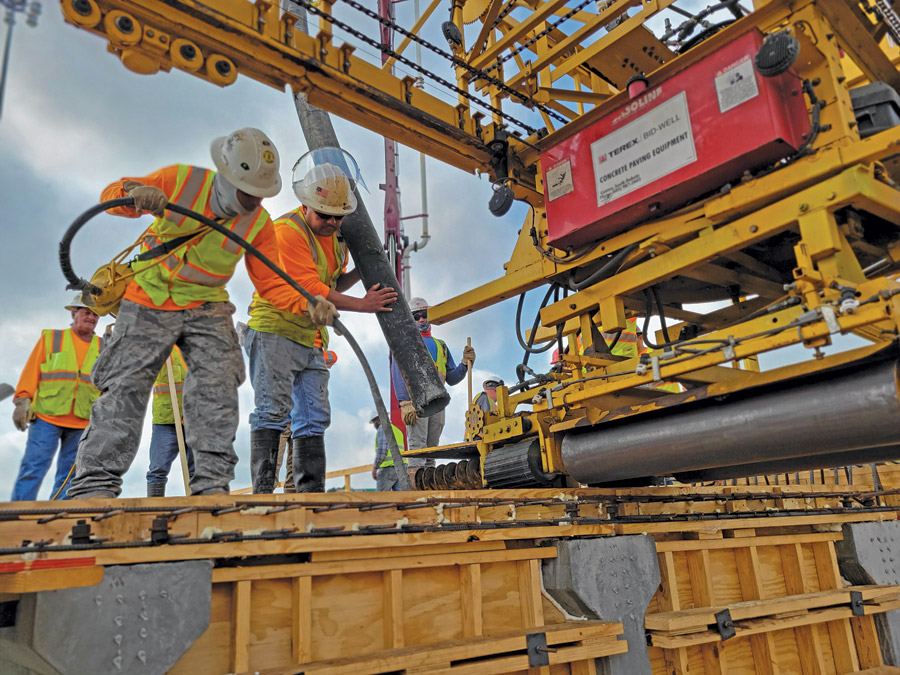
Crews battled a two-day weather delay that held up placing concrete.
Photo courtesy Louisiana Dept. of Transportation and Development
After two weeks of preparations, a 10-ft-wide, 12-axle SPMT from Berard Transportation in New Iberia, La., was rolled into place on the evening of Jan. 20 to support the two damaged girders as CEC’s crews completed saw-cutting and diaphragm removal to separate the segment and deck from the rest of the overpass. Weighing approximately 215,000 lb, the severed section was carefully pulled away from the overpass and lowered using the SPMT’s unified eight-jack system, then rolled approximately 600 ft to a temporary laydown yard that CEC established within the interchange footprint using 2,000 tons of stone.
Berard Transportation vice president of operations Brett Berard says that while the interchange was closed for about five hours to complete the extraction process, the arrival of rain during the final half hour “might have moved us along a bit. But it was good to have I-49 back open by 2 in the morning.”
“When time is of the essence, there’s no better software than being out on the jobsite with everyone and making decisions there.”
—Matt Hebert, Engineer-of-Record, Huval Associates
With the I-10 eastbound overpass now carrying two 11-ft-wide lanes and a 1-ft shoulder, CEC began preparations to create the three-girder replacement section, the design of which used data from a pre-removal survey to fully replicate the original span’s 13.65-degree skew and camber. Hebert notes that the new prestressed replacement girders used low-relaxation tensioning strands, a departure from stress-relief strands found in the 1960s-era components.
“Aside from having to rework the strand pattern, the new girders were pretty much a replica of what was there already,” he says.
To provide horizontal and vertical control for constructing the new section, CEC built two temporary steel-framed bents in the laydown yard. Each bent consisted of six driven piles topped with secondary and primary caps to simulate the elevation and curvature of the existing overpass span.
In a bit of welcome good timing, the temporary bents were completed in early March just as the replacement girders arrived from fabricator F-S Prestress LLC of Hattiesburg, Miss.
“Once the girders were set on the risers, we immediately began installing the overhang brackets and formwork, and pouring the concrete deck, curb and barrier section,” Giglio says.
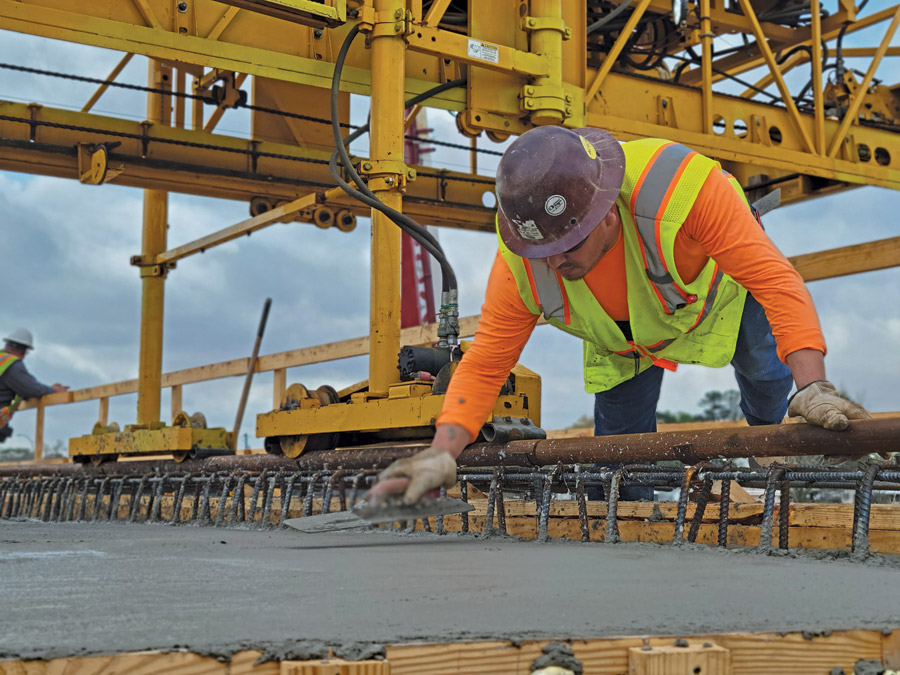
Work on the replacement bridge is on schedule to complete by the end of March.
Photo courtesy Louisiana Dept. of Transportation and Development
In With the New
Installation of the replacement section began Friday, March 17, when the third damaged girder was cut from the overpass and crane-lifted to a nine-axle hydraulic trailer for transport to the laydown yard. This allowed the Berard SPMT setup to be ready under the new three-girder span in time for the scheduled overnight closure of I-49.
Once CEC broke out 2.5 ft of existing bridge deck exposing the transverse rebar to tie in with a 3-ft-wide closure pour, Berard transported the new three-girder span and carefully maneuvered it in position until the gutter lines and bearing plates all matched.
After tying rebar, all seemed ready for the closure pour the following day until nature intervened. Overnight temperatures fell below freezing, forcing a two-day delay in closing the gap.

An emergency project like this takes a “high degree of trust and the ability to assess things firsthand,” says Brett Berard of Berard Transportation.
Photo courtesy Louisiana Dept. of Transportation and Development
“It was funny because the low temperature hadn’t gone below 50 degrees in the previous four weeks leading up to the span erection,” Giglio says.
Still, the project team expects all overpass repair tasks to be completed by the end of March. That includes pouring the new span's post and railing, new pavement striping, reinstallation of the bridge’s facia-mounted guide signage and, perhaps most importantly, a return to normalcy for motorists on Lafayette-area interstates.
DOTD’s Arceneaux has high praise for the project team’s communication. “We were always in the loop and able to keep travelers informed with the latest information on progress and potential closures,” he says.
For an effort that began without warning and awash in uncertainty, Hebert says the I-10 repair project “went as smooth as an emergency project could go. I think that’s a credit to the planning we did from outset.”
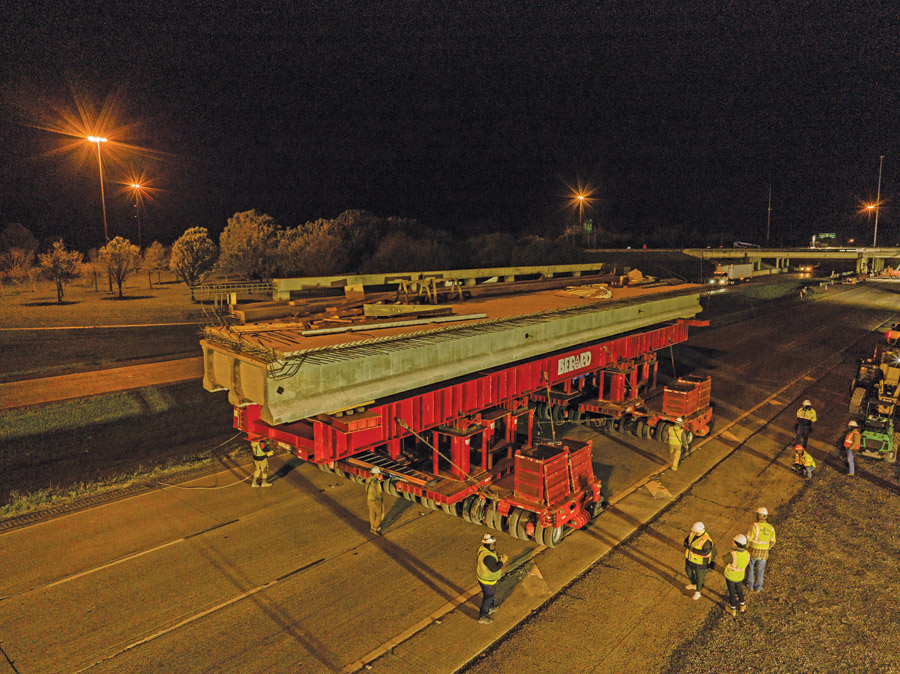
The new prestressed replacement girders used low-relaxation tensioning strands.
Photo courtesy Louisiana Dept. of Transportation and Development
Berard adds that such projects demand a high degree of trust among participants as well as the ability to assess things firsthand.
“Of course you want to use all your tools you can,” he says. “But when time is of the essence, there’s no better design software than being out on the jobsite with everyone and making decisions there.”
Giglio says such planning is essential to keep fast-track projects such as this one moving.
“A little more lift capacity and height and a little more clearance here and there allows us to have a smooth operation,” he says.


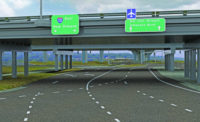
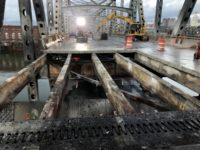
Post a comment to this article
Report Abusive Comment